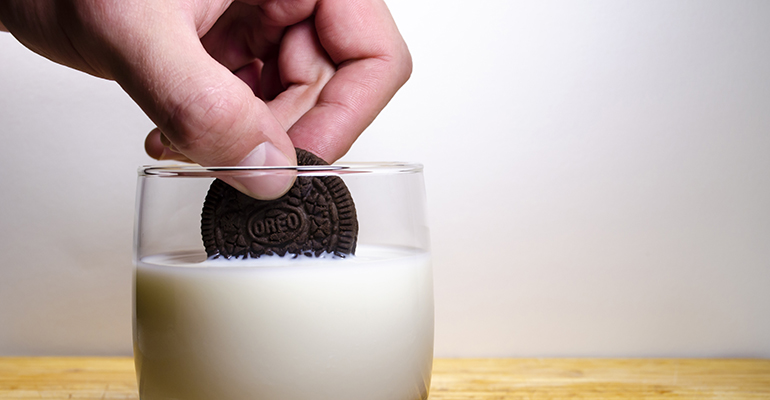News
Snacking's zeitgeist: nostalgia and childhood memories
2 Mar 2022Snack time has become any time. Although the trend toward eating mini-meals has been growing over the last several years, the pandemic accelerated this transformation. Now 64% of consumers say they prefer snacking to consuming traditional meals, with 85% of respondents in the 2022 Mondelez State of Snacking saying they eat at least one snack per day for indulgence.
Indulgence can mean many things, but for many, it often translates to comfort eating. When looking for comfort food, many consumers are reaching for nostalgic products from their childhood. Mondelez's State of Snacking report from 2020 showed that 53% of consumers were purchasing nostalgic childhood brands.

Brands taking a bite out of the nostalgia trend
While traditional brands like Mondelez’s Ritz crackers and Oreos fit into this category, there is a crop of emerging startups that are reimagining these classic products for a new era. Gluten-free, better-for-you cereal maker Magic Spoon harks back to the heyday of sweet cereals but has reimagined them to feature functional ingredients such as caffeine and adaptogens to provide consumers with a certain mindset in addition to a feeling of fullness post-consumption.
Low-sugar candy maker Behave gives new life to gummy bears by creating a low-sugar line featuring flavours such as lychee and passionfruit. Plant-based chicken nugget brand Nuggs produces breaded, meat-free bites whose uneven, oblong shape are reminiscent of the chicken nuggets well-known to 90s youth in the US. Ramen Hero, a meal kit company purveying premium-ingredient ramen options, takes the idea of packaged ramen and has recreated it with high-quality ingredients and then delivers its product directly to consumers’ doors.
Startups that are looking to make a splash and gain consumer recognition are not the only ones actively tapping into this longing for nostalgic options. Big food is leaning into the fact that many of its brands are inherently nostalgic. Twinkies from Hostess Brands and Oreos from Mondelez are also turning to sentimental products and playing on heartstrings in their marketing to convince consumers to support them with their wallets.
Brands have long used nostalgia as a means to connect with customers. Part of this has to do with the cyclical nature of trends. Studies have shown that every 20-40 years the zeitgeist of the previous generation resurfaces in mainstream culture. Food is one of the segments that is a direct beneficiary of these trend cycles.
Snacking and nostalgic products are here to stay
Not only do trend cycles indicate that nostalgic options will have an attentive audience with Millennials, but last year the ingredients company Kerry found that the nostalgic tastes that gained popularity during the pandemic will continue to remain in favour as consumers seek comfort from their choices in food and beverage. Similarly, ADM found that nostalgic, comforting flavours will become a commonplace product choice for manufacturers in the coming years.
As snacking continues to pervade consumers' days and replace the idea of having three square meals — a study from The NPD Group from 2017 found that there has been a 4-point increase in the tendency of snack food eating to occur during main meal times — competition for consumer attention in the space will continue to mount.
